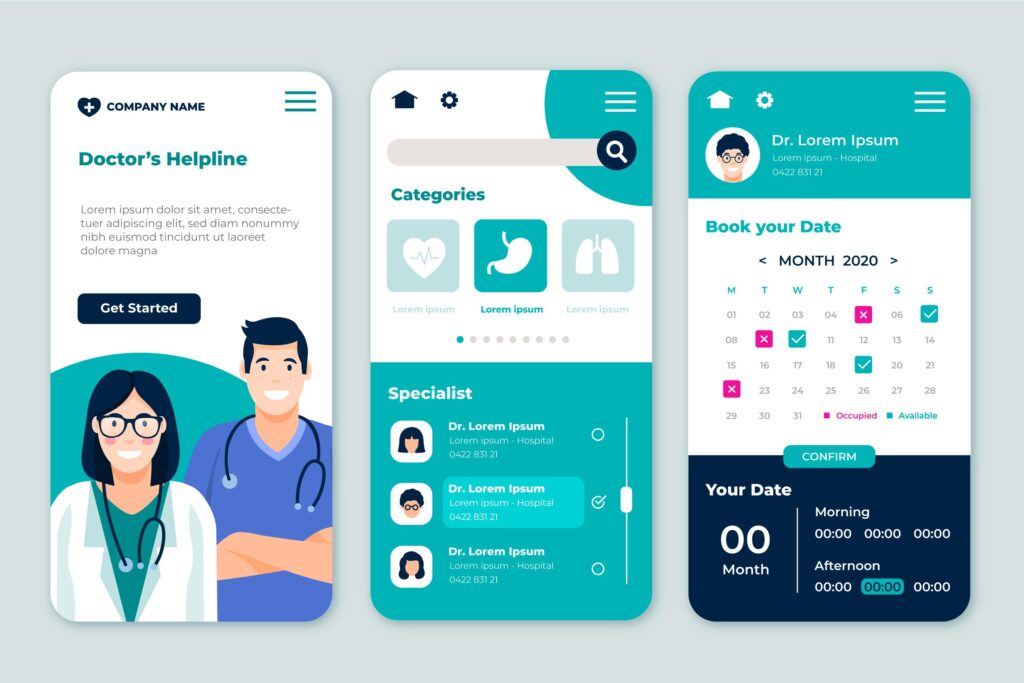
In recent years, the global healthcare industry has witnessed an extraordinary transformation through digital innovation. One of the most impactful advancements is the rise of telemedicine applications. These platforms have enabled healthcare providers to extend their reach, offer remote consultations, and improve healthcare accessibility and efficiency. As we move into 2025, the interest in telemedicine app development continues to grow among medical professionals, entrepreneurs, and hospitals. Understanding the cost and process of telemedicine application development is crucial for businesses planning to invest in this space.
This article examines the key stages involved in developing a telemedicine app in 2025, as well as the estimated costs associated with the process. We will also cover the role of telemedicine software development services and the key factors that influence pricing.
Understanding the Importance of Telemedicine App Development in 2025
Telemedicine app development plays a vital role in modern healthcare. With the rising demand for on-demand medical care, the ability to consult with a doctor from the comfort of one’s home has become more than just a convenience—it’s a necessity. The continued integration of artificial intelligence, IoT, and secure cloud technologies has made telemedicine platforms more robust, secure, and scalable.
In 2025, telemedicine applications are not limited to video consultations alone. They include features like appointment booking, electronic health record (EHR) integration, AI-powered chatbots, prescription management, and remote patient monitoring. These apps streamline the entire process of healthcare delivery, reduce overhead costs for providers, and offer patients timely access to care.
Key Steps in the Telemedicine Application Development Process
The development of telemedicine applications requires thorough planning and expert execution. Below are the key phases that businesses should follow to develop a successful app:
Requirement Analysis and Market Research
The first step involves understanding the target audience, legal compliances (such as HIPAA in the U.S.), and healthcare trends. Competitor research also helps identify which features are most in demand and what gaps your app can fill.
Choosing the Right Technology Stack
The next step involves selecting the technology stack for frontend, backend, databases, and frameworks. Most telemedicine apps use technologies like React Native, Flutter, Node.js, and Firebase. Integration of APIs for video calls, payment gateways, and data encryption is also important.
UI/UX Design
A user-centric design is critical in healthcare apps. The interface should be intuitive, accessible to all age groups, and optimized for both patients and doctors. Seamless navigation ensures that users can quickly book appointments, initiate calls, and access records.
Development and Testing
In this phase, the actual coding begins. A reliable ecommerce app development company or a telemedicine software development services provider ensures that both frontend and backend functions are developed concurrently. Testing is carried out to fix bugs, verify compliance, and ensure smooth performance.
Deployment and Launch
Once the application is tested, it is deployed to app stores and cloud servers. App developers also monitor the performance, user feedback, and update requirements after the launch.
Ongoing Maintenance and Support
Post-launch support is essential for updating software libraries, patching vulnerabilities, and adding new features. Continuous maintenance keeps the app relevant and secure over time.
Estimated Cost of Telemedicine App Development in 2025
The cost of telemedicine app development in 2025 can vary significantly depending on various factors such as the complexity of features, development platform, technology stack, and region of the development team. Here is a general breakdown of potential costs:
- Basic Telemedicine App: An MVP (Minimum Viable Product) version with video consultation, registration, and appointment scheduling may cost between $25,000 and $40,000.
- Medium-Complexity App: A more comprehensive app with chat support, payment integration, and basic EHR features may range between $50,000 and $80,000.
- High-End Telemedicine Solution: Apps with AI-based diagnostics, wearable integration, cloud hosting, and advanced data security can cost anywhere from $100,000 to $150,000 or more.
Hiring a telemedicine software development services firm in the USA typically involves higher rates compared to offshore companies. However, it may offer advantages in compliance, communication, and quality assurance.
Key Features to Include in a Telemedicine App
A fully functional telemedicine app should ideally include the following features:
- Secure user registration and login
- Real-time video/audio consultations
- Appointment scheduling and calendar sync
- Payment gateway integration
- Chat with healthcare providers
- EHR access and management
- ePrescription generation
- Push notifications and reminders
- Role-based dashboards for doctors and patients
- Data encryption and compliance with healthcare regulations
These features help ensure an all-inclusive digital healthcare experience for users.
Why Businesses Need Professional Telemedicine Software Development Services
Partnering with a skilled development agency can make a significant difference in the success of your telemedicine platform. Experienced ecommerce app developers and healthcare-focused teams offer end-to-end solutions, including consulting, compliance handling, infrastructure setup, and tech support. Their expertise ensures that your app is scalable, compliant, and optimized for performance.
Whether you are a startup, clinic, or large hospital network, investing in telemedicine application development with the right professionals can bring long-term benefits in patient satisfaction, cost reduction, and healthcare innovation.
Conclusion
Telemedicine app development is set to play an even bigger role in the healthcare sector in 2025. With the growing demand for virtual care, businesses that invest in this space have the opportunity to lead in digital health innovation. The cost of development varies depending on the scope, but the potential ROI is significant due to the wide adoption of telehealth services.
Understanding the telemedicine application development process and selecting the right telemedicine software development services is essential for creating a secure, compliant, and user-friendly app. As healthcare continues to evolve, telemedicine apps will remain critical tools for accessible, affordable, and efficient care delivery.



